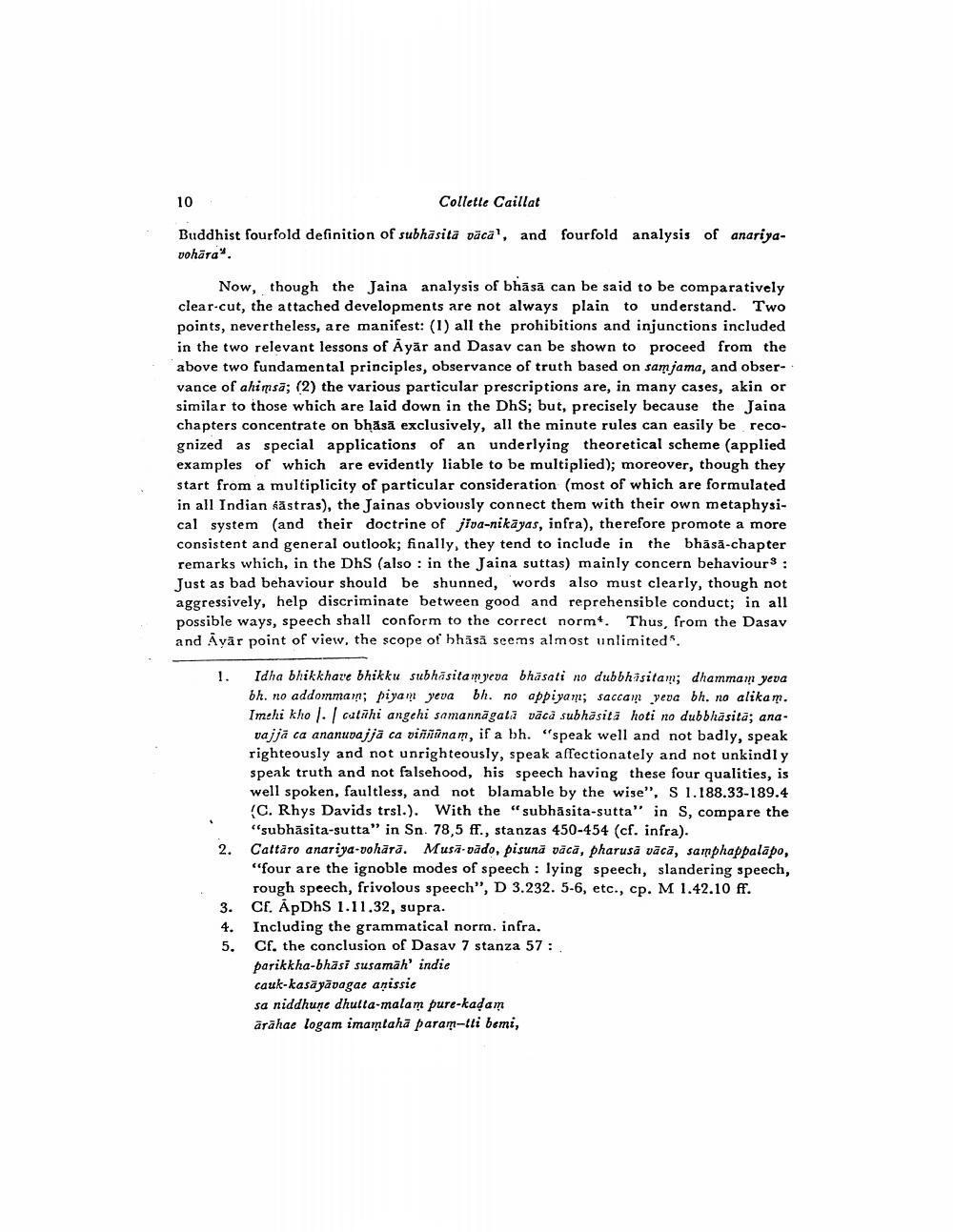________________
10
Collette Caillat
Buddhist fourfold definition of subhasita vāca', and fourfold analysis of anariyavohāra”.
Now, though the Jaina analysis of bhāsă can be said to be comparatively clear-cut, the attached developments are not always plain to understand. Two points, nevertheless, are manifest: (1) all the prohibitions and injunctions included in the two relevant lessons of Āyār and Dasav can be shown to proceed from the above two fundamental principles, observance of truth based on samjama, and observance of ahimsa; (2) the various particular prescriptions are, in many cases, akin or similar to those which are laid down in the DhS; but, precisely because the Jaina chapters concentrate on bhāsā exclusively, all the minute rules can easily be recognized as special applications of an underlying theoretical scheme (applied examples of which are evidently liable to be multiplied); moreover, though they start from a multiplicity of particular consideration (most of which are formulated in all Indian Aästras), the Jainas obviously connect them with their own metaphysical system and their doctrine of jiva-nikayas, infra), therefore promote a more consistent and general outlook; finally, they tend to include in the bhāsā-chapter remarks which, in the DhS (also : in the Jaina suttas) mainly concern behaviour : Just as bad behaviour should be shunned, words also must clearly, though not aggressively, help discriminate between good and reprehensible conduct; in all possible ways, speech shall conform to the correct norm. Thus, from the Dasav and Ayar point of view, the scope of bhāsā seems almost unlimited.
1. Idha bhikkhave bhikku subhasita myeva bhäsali no dubbhisitam; dhamma yeva
bh. no addomma; piyam yeva bh. no appiyam; saccam yeva bh. no alikam. Imehi kho 1. cutahi angehi samannāgali vācă subhasita hoti no dubbhāsita; ana
vajja ca ananuvajja ca viññünam, if a bh. "speak well and not badly, speak righteously and not unrighteously, speak affectionately and not unkindly speak truth and not falsehood, his speech having these four qualities, is well spoken, faultless, and not blamable by the wise". S 1.188.33-189.4 (C. Rhys Davids trsl.). With the “subhasita-sutta" in S, compare the "subhāsita-sutta" in Sn. 78,5 ff., stanzas 450-454 (cf. infra). Cattaro anariya-vohārā. Musā vādo, pisunā vācă, pharusā vācā, samphappalāpo, "four are the ignoble modes of speech : lying speech, slandering speech,
rough speech, frivolous speech", D 3.232. 5-6, etc., cp. M 1.42.10 ff. 3. Cf. ApDhS 1.11.32, supra. 4. Including the grammatical norm. infra.
Cf. the conclusion of Dasav 7 stanza 57 : parikkha-bhāsi susamah' indie cauk-kasāyāvagae anissie sa niddhune dhulta-malam pure-kadam ärähae logam imamtaha param-Ili bemi,
5.




